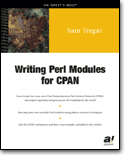CPAN Instant Update Mirroring
If you've got a CPAN mirror and you haven't had a chance to test out the instant update mirroring, I'm here to suggest you try it out. I had a few spare moments earlier this week to test it out and I'm happy to say that the setup is trivial. If you follow these instructions, you can get yourself set up in a matter of minutes. In my case it was installing a couple of modules and then firing up the sync from the command line. When I checked back later, I had around 9 GB of CPAN goodness. As it happened, I uploaded a dist via PAUSE later in the day. I remembered to check my new instant update mirror a few minutes later and yes, my upload was already available in the mirror.
